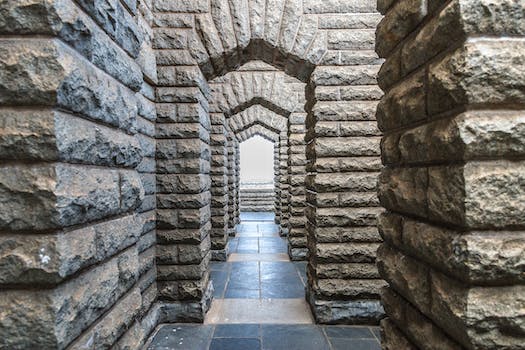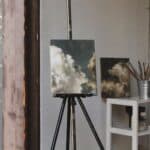Transforming walls with ombre effect is a popular trend in interior design that adds depth and dimension to any space. This technique involves blending one color into another, creating a gradient effect that can range from subtle to bold. Whether you want to create a calming atmosphere or make a statement, ombre walls are a versatile and stylish option that can transform the look and feel of any room.
- 1. Introduction
- 1.1. Explanation of ombre effect
- 1.2. Benefits of using ombre effect on walls
- 1.3. History of ombre effect on walls
- 1.4. Why ombre effect is popular
- 2. Preparation
- 2.1. Choosing paint colors
- 2.2. Gathering necessary materials
- 2.3. Preparing the wall surface
- 2.4. Marking the ombre effect pattern
- 2.5. Applying primer
- 3. Application
- 3.1. Mixing paint colors
- 3.2. Starting at the top of the wall
- 3.3. Blending the colors together
- 3.4. Creating a seamless transition
- 3.5. Allowing time for drying
- 4. Finishing Touches
- 4.1. Adding additional layers
- 4.2. Sanding the surface
- 4.3. Cleaning up excess paint
- 4.4. Touching up any mistakes
- 4.5. Sealing the wall
- 5. Conclusion
1. Introduction
Transforming walls with an ombre effect is a popular trend in interior design. Ombre, which means ‘shaded’ in French, involves blending colors from light to dark to create a gradient effect on walls. This technique can add depth and dimension to a room, making it appear larger or cozier depending on the colors chosen. In this article, we will explore the process of creating an ombre effect on your walls and provide tips and tricks for achieving a professional-looking finish.
1.1. Explanation of ombre effect
Ombre effect is a gradient of colors that transition from one shade to another. It can be achieved by blending a lighter color with a darker color or vice versa. This effect can be applied in various ways, such as in fashion, hair, and even on walls. The ombre effect on walls can create a beautiful and unique look, adding depth and dimension to a room. It can be done with paint or wallpaper, and the possibilities for color combinations are endless.
1.2. Benefits of using ombre effect on walls
Using ombre effect on walls can completely transform the look of a room. This gradual blending of colors can add depth, texture, and visual interest to an otherwise plain wall. Ombre effect can also create a calming and soothing atmosphere in a space. It is a versatile technique that can be used in a variety of color combinations and can work well in any room of the house. Additionally, ombre effect is a great way to add a pop of color to a space without overwhelming it. Overall, using ombre effect on walls is a simple and effective way to elevate the design of any room.
1.3. History of ombre effect on walls
The ombre effect is a popular trend in wall painting that involves gradually blending one color into another. This technique creates a beautiful and unique look that can transform any room into a work of art. The origins of the ombre effect can be traced back to the 19th century, when it was first used in fabrics and textiles. It wasn’t until the 21st century that the ombre effect became popular in interior design, particularly on walls. Today, this technique is widely used by homeowners, designers and decorators alike to add a touch of style and elegance to their living spaces.
1.4. Why ombre effect is popular
Ombre effect is a popular trend in home decor, especially when it comes to transforming walls. This technique involves blending two or more colors together to create a gradient effect, where the colors fade into each other seamlessly. It adds depth and dimension to a room and can be used to create a variety of moods, from soothing and calming to bold and dramatic. The ombre effect is versatile and can be used in different ways, such as painting an entire wall or just a portion of it. It’s no surprise that this trend has become a favorite among DIY enthusiasts and interior designers alike.
2. Preparation
Before starting to transform your walls with the ombre effect, there are a few things you need to prepare. First, you will need to gather all the necessary tools and materials such as paint brushes, paint rollers, painter’s tape, paint mixing containers, and of course, the paint colors you will be using. It is recommended that you use at least three different shades of the same color to achieve the ombre effect. Next, you will need to prepare the wall surface by cleaning it thoroughly and ensuring that it is free from any bumps or cracks. Finally, it is important to protect your surrounding area by laying down drop cloths or plastic sheets to prevent any accidental spills or drips from the paint.
2.1. Choosing paint colors
Choosing the right paint colors for your walls can make all the difference in transforming a room from ordinary to extraordinary. When deciding on a color scheme, it’s important to consider the overall mood and atmosphere you want to create. Warm colors like reds, yellows, and oranges can create a cozy and inviting feel, while cool colors like blues and greens can promote a sense of calm and relaxation. Neutral colors like grays and whites can provide a versatile backdrop for any decor. Take into account the natural lighting in the room, as well as the color of your furniture and accessories, to ensure a cohesive and harmonious look.
Before diving into the painting process, it’s important to properly prepare the walls. Make sure the surface is clean, dry, and free of any debris or imperfections. Fill in any holes or cracks with spackle and sand them down until smooth. Use painter’s tape to protect any areas you don’t want to paint, such as trim and baseboards. Finally, apply a coat of primer to ensure the paint adheres properly and provides an even finish.
2.2. Gathering necessary materials
Before starting your ombre wall project, it is important to gather all the necessary materials. You will need a paint roller, paint trays, paint brushes, painters tape, drop cloths, a ladder, and of course, the paint colors you will be using. Make sure to measure the wall you will be painting so you can purchase enough paint to cover the entire surface. It is also important to prepare the wall by cleaning it thoroughly and filling in any holes or cracks with spackle. Once the wall is prepped and all materials are gathered, you can begin transforming your walls with the ombre effect.
2.3. Preparing the wall surface
Before applying the ombre effect to your walls, it is important to properly prepare the surface. Start by cleaning the walls thoroughly with soap and water to remove any dirt, dust, or grime. Then, allow the walls to dry completely before moving on to the next step.
Next, inspect the walls for any cracks, holes, or other imperfections. Use a spackling compound to fill in any gaps and sand down any rough spots until the surface is smooth.
Finally, apply a coat of primer to the entire surface to create a smooth, even base for the ombre effect. Allow the primer to dry completely before moving on to the next step.
2.4. Marking the ombre effect pattern
To achieve a seamless ombre effect on your walls, proper preparation is crucial. Start by cleaning the walls thoroughly to remove any dirt, dust or debris. Next, apply a base coat of paint in the lightest shade of your chosen color scheme. Allow the paint to dry completely before proceeding.
Once the base coat is dry, use a measuring tape and pencil to mark off sections on the wall in equal intervals. The sections should be at least 3-4 inches wide. These marks will serve as your guide when blending the colors.
Using a paint roller, apply the medium shade of your chosen color to the first section, starting at the bottom. Blend the color upwards using a dry brush or a sponge. Make sure to blend well, so there are no harsh lines.
Repeat the process with the darkest shade of the color scheme on the top section. Blend downwards towards the medium shade, and then blend the medium shade upwards again to create a seamless transition between the colors. Continue this process until you have covered all the sections on the wall.
Allow the paint to dry completely before removing the painter’s tape. Once you remove the tape, you will have a beautiful ombre effect on your walls!
2.5. Applying primer
Before applying the ombre effect to your walls, it is important to properly prepare the surface. Start by cleaning the walls thoroughly and removing any dirt or debris. Next, fill in any cracks or holes with spackle and sand down any rough patches. Once the walls are smooth and even, apply a coat of primer to ensure that the paint adheres evenly and lasts longer. Allow the primer to dry completely before applying the ombre effect.
3. Application
Are you looking for a unique way to transform your boring walls into a work of art? Look no further than the ombre effect! This trendy technique involves blending colors from light to dark, creating a beautiful gradient effect on your walls. With a little patience and some basic supplies, you can easily achieve this stunning look in your own home. In this article, we’ll guide you through the steps to create an ombre effect on your walls and give your space a fresh new look.
3.1. Mixing paint colors
Mixing paint colors is a crucial step in achieving the perfect ombre effect on your walls. Start by selecting the base color and the shade you want to blend it with. Use a color wheel to help you choose complementary colors that will create a harmonious gradient. For a subtle ombre effect, mix small amounts of the darker color into the lighter color until you achieve the desired hue. For a more dramatic effect, use a sponge or brush to create a gradient effect by blending the two colors together on the wall. Remember to always test your colors on a small area before starting the project to ensure you are happy with the result.
3.2. Starting at the top of the wall
Starting at the top of the wall, apply the lightest color of paint with a roller brush. Roll the paint onto the wall in a wide, horizontal band. Use a paintbrush to smooth out any lines or drips. Next, mix the lightest color with a slightly darker shade to create the next color in the ombre effect. Apply this color in a horizontal band directly below the first one, blending the two colors together with a dry brush. Continue down the wall, mixing the paint with progressively darker shades until you reach the bottom. Remember to blend each color band together as you go to create a seamless ombre effect.
3.3. Blending the colors together
Blending the colors together is a crucial step in achieving a beautiful ombre effect on your walls. It requires a good eye for color and a steady hand to create a smooth transition from one shade to the next. Begin by selecting your color palette and organizing your paint colors from lightest to darkest. Mix each color with white to create several shades of each color. Use a paintbrush to apply the lightest shade at the top of the wall, then gradually blend in the darker shades as you work your way down. Use a dry paintbrush to blend the colors together, creating a seamless transition between each shade. Take your time and be patient, as this process can be time-consuming but the end result is well worth the effort.
3.4. Creating a seamless transition
When it comes to transforming walls with ombre effect, creating a seamless transition is key. This can be achieved by blending the colors gradually, using a sponge or a brush. It’s important to choose the right colors that complement each other and create a harmonious gradient. Start with the lightest color at the top and gradually add more of the darker color as you move down the wall. Don’t be afraid to experiment and adjust the colors as needed to achieve the desired effect. With a bit of patience and creativity, you can create a stunning ombre effect that will transform any room into a work of art.
3.5. Allowing time for drying
One of the most important steps in achieving a beautiful ombre effect on your walls is allowing ample time for drying. After you have applied the base coat and allowed it to dry completely, it is important to take your time with the application of the ombre effect. This means blending carefully and allowing each layer to dry before moving on to the next. Rushing this process can result in a less-than-perfect finish, so be patient and allow plenty of time for each layer to dry completely before continuing.
4. Finishing Touches
After completing the ombre effect on your walls, there are a few finishing touches that can really bring the look together. One option is to add a stripe of metallic paint along the transition line between the two colors to give it a subtle pop. You could also add a stencil design over the ombre effect for a unique and personalized touch. Another idea is to hang wall art that complements the colors and style of the ombre effect. Whatever finishing touches you choose, they will help to elevate the overall look of your transformed walls.
4.1. Adding additional layers
Adding additional layers is crucial to achieving the perfect ombre effect on your walls. Once you have applied your base coat and allowed it to dry completely, it’s time to add additional layers of your chosen colors. Start by mixing your base color with a small amount of your chosen lighter color and apply it to the bottom portion of the wall using a large paintbrush. Gradually add more of the lighter color to the mix as you move up the wall, blending as you go. Continue adding layers until you reach the desired ombre effect.
For the finishing touches, you can add a subtle glitter effect to your ombre wall by mixing a small amount of glitter into your paint before applying. You can also add texture by using a textured paint roller or by lightly dragging a brush or comb through the wet paint. Finally, make sure to seal your finished wall with a clear coat to protect it and give it a polished look.
4.2. Sanding the surface
Before applying the ombre effect, it is important to properly prepare the wall surface. This includes sanding the surface to create a smooth and even base. Use a fine grit sandpaper and work in circular motions to buff out any rough spots or bumps on the wall. Once the surface is sanded, wipe it down with a damp cloth to remove any dust or debris. This will ensure that the ombre effect looks clean and polished.
After the ombre effect is applied, it’s time to add some finishing touches. This can include adding complementary decor, such as a piece of artwork or a decorative mirror. You can also add some texture by using a stencil or wallpaper to create an accent wall. Finally, consider adding some accent lighting to highlight the ombre effect and create a cozy ambiance in the room.
4.3. Cleaning up excess paint
After achieving the perfect ombre effect on your walls, the last thing you want is excess paint ruining the overall look. To avoid this, it’s important to clean up any excess paint as soon as possible. Use a damp cloth or sponge to gently wipe away any drips or smudges. If the excess paint has already dried, use a scraper or sandpaper to carefully remove it. Taking the time to clean up any excess paint will ensure that your ombre walls look flawless.
4.4. Touching up any mistakes
Before completing your ombre wall, it’s important to touch up any mistakes. Use a small brush to fix any areas where the paint may have bled or gone out of line. Take a step back and evaluate the overall look of your wall. If there are any areas that need more depth or blending, add additional layers of paint until you achieve the desired effect. Once you’re satisfied with your ombre wall, allow it to dry completely before adding any decor or furniture.
4.5. Sealing the wall
Sealing the wall is an important step in achieving a flawless ombre effect. After the paint has dried completely, use a clear coat sealer to protect and preserve the finish. Apply the sealer in long, even strokes, taking care to avoid drips or bubbles. Allow the sealer to dry completely before moving on to the final step of the transformation process.
5. Conclusion
In conclusion, the ombre effect is a fantastic way to transform any plain wall into a stunning focal point. Whether you choose to DIY or hire a professional, there are many ways to achieve this look. From bold and dramatic to subtle and calming, the ombre effect can be customized to fit any style or taste. So don’t be afraid to experiment with different colors and techniques, and have fun transforming your walls with this beautiful and versatile design trend.
5.1. Summary of the process
To achieve the ombre effect on walls, begin by selecting the colors that will be used. Then, paint the entire wall with the lightest color and allow it to dry completely. Next, mix the lightest color with a small amount of the next darker color and paint the wall with this new color, starting at the bottom and blending upwards. Continue to mix in more of the darker color as you move up the wall, blending each new color with the previous one until you reach the desired ombre effect. To finish, allow the wall to dry completely and enjoy your new transformed space.
5.2. Tips for achieving the best results
To achieve the best results when transforming walls with an ombre effect, it is important to start with a clean and smooth surface. Consider using a primer to help the paint adhere properly and create a more even finish. When selecting your paint colors, choose shades that blend well together and consider using a paintbrush or roller with a tapered edge to create a gradual transition between colors. Experiment with different blending techniques, such as feathering or stippling, to achieve the desired effect. And don’t forget to step back and assess your work as you go, making any necessary adjustments to ensure a seamless and beautiful ombre finish.
In conclusion, transforming your walls with an ombre effect is a fun and creative way to add visual interest and depth to any room. With the right tools, techniques, and a little bit of patience, you can achieve stunning results that are sure to impress.
5.3. Different variations of the ombre effect
When it comes to the ombre effect, there are endless variations to choose from. Some people opt for a subtle shift in color, while others prefer a more dramatic gradient. You can also play around with different color combinations and experiment with different techniques, such as blending or layering. No matter what approach you take, the ombre effect is a fun and creative way to transform your walls and add a unique touch to your space.
5.4. Examples of ombre effect on walls
Achieving an ombre effect on walls is a great way to add depth and dimension to a room. There are many ways to approach this technique, whether it be using a subtle gradient or a bold transition between colors. Here are some examples of how the ombre effect can transform a space:
1. Soft gradient: A gentle transition from light to dark creates a calming and serene atmosphere. This is perfect for bedrooms or bathrooms where relaxation is key.
2. Bold contrast: For a more dramatic look, choose two contrasting colors and blend them together in a sharp gradient. This works well in living rooms or dining areas where you want to make a statement.
3. Textured ombre: Using a textured paint or wallpaper can add another layer of interest to the ombre effect. This is great for accent walls or focal points in a room.
No matter what approach you take, the ombre effect is a versatile and creative way to transform your walls.
5.5. Encouragement to try it out
In conclusion, transforming your walls with an ombre effect can be a fun and creative way to add a unique touch to your home. Don’t be afraid to try it out and experiment with different colors and techniques. With a little bit of patience and practice, you can achieve stunning results that will make your space stand out. So why not give it a go and see what you can create? You might just surprise yourself with how beautiful your walls can look!
Conclusion
The ombre effect is a beautiful and unique way to transform walls in any room. With its gradual color transition, it adds depth and dimension to an otherwise plain wall. Whether you choose a subtle or bold ombre effect, it is sure to make a statement and bring a touch of sophistication to your home decor.






These 10 innovative and imaginative DIY home decor ideas from [object Object] provide a refreshing approach to enhancing ones living…